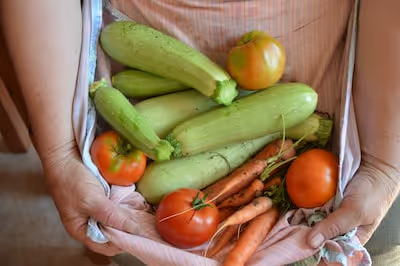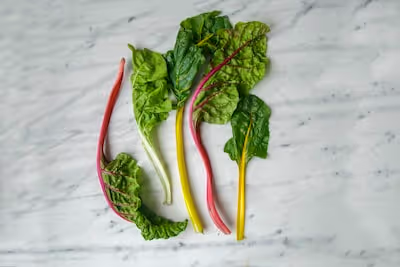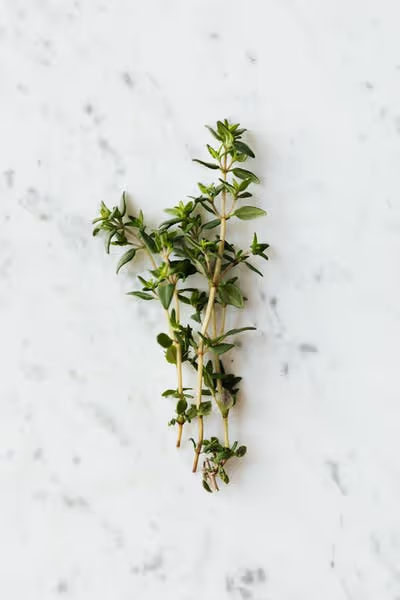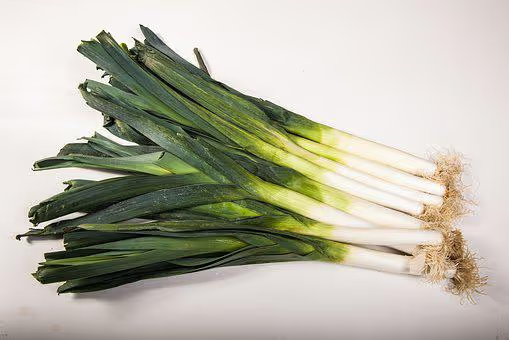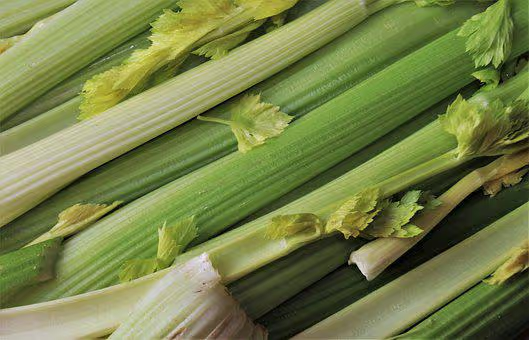Growing Parsley Root at Home: Easy Steps for Healthy Harvests
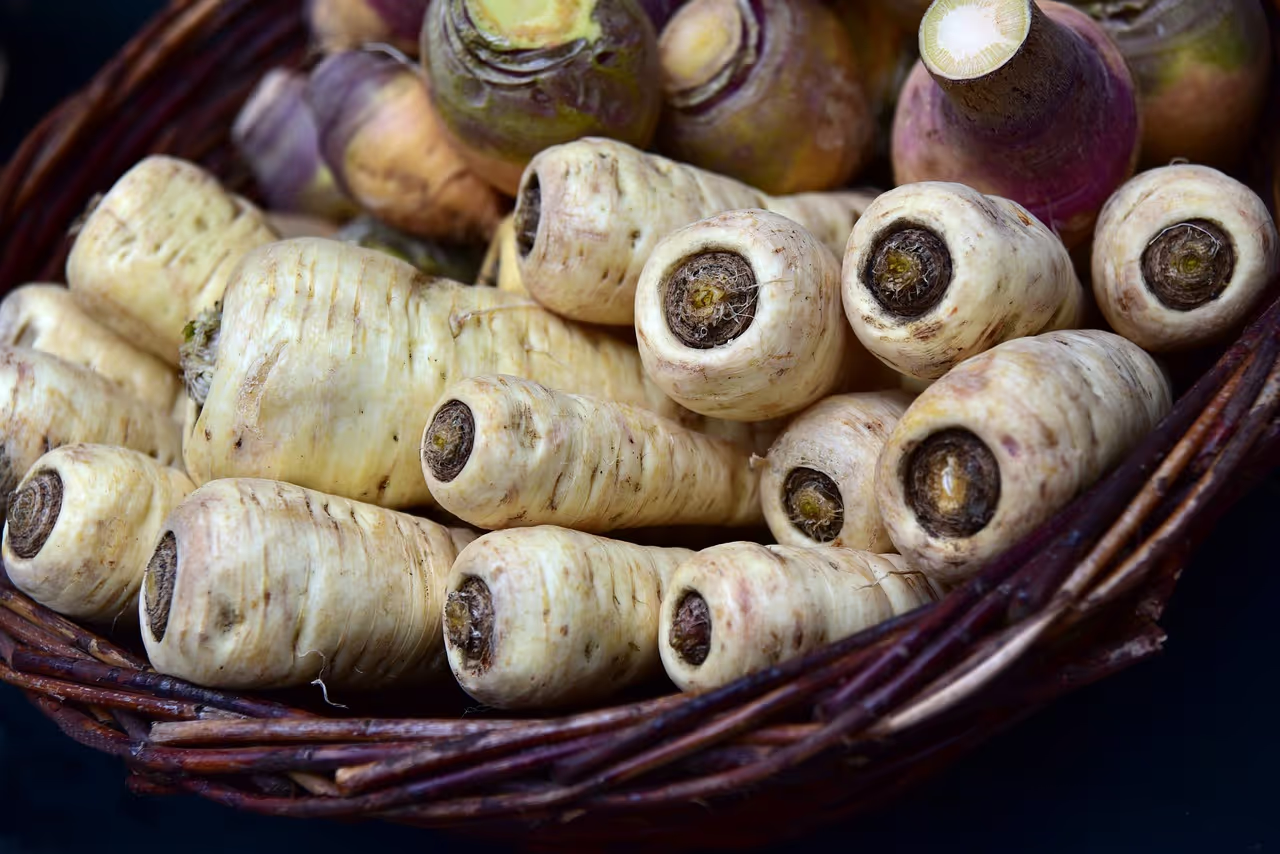
Growing Parsley Root
Growing parsley root lets you taste an earthy, vibrant veggie unavailable at common markets. Sow seeds in-rich, loose soil, give them steady moisture, and you'll harvest flavorful, carrot-shaped roots within months. Growing parsley root rewards patient gardeners richly—keep reading and learn exactly how to cultivate this overlooked gem at home.
Cheatsheet: Fast-Track Parsley Root Success
🌱 Choose Your Seeds
Parsley root (Petroselinum crispum var. tuberosum) yields carrot-like roots packed with vitamin C, fiber, and potassium. Popular cultivars: Hamburg, Arat.
🪴 Site & Soil Prep
- Full sun (6+ hrs daily)
- Well-drained, loose soil, pH 6.0-7.0
- Remove rocks/clumps for straight roots
- Add aged compost: roots thrive in fertile beds
🗓️ Planting Time
- Sow 2-4 weeks before last frost (soil 50-68°F / 10-20°C)
- Sow seeds 0.5 in (1.2 cm) deep, 1 in (2.5 cm) apart, in rows 12 in (30 cm) apart
- Germination: 2-4 weeks. Soak seeds overnight for faster sprouting
💦 Water & Feed
- Keep soil evenly moist, not soggy
- Feed with balanced organic fertilizer midseason
- Mulch for moisture and weed control
🌿 Thin & Care
- Thin to 3 in (8 cm) apart when plants reach 2 in (5 cm)
- Weed regularly: roots dislike competition
- Watch for carrot fly & leaf spots; use row covers if needed
⏳ Harvest & Store
- Harvest roots after 3-4 months, or after first light frost for sweeter flavor
- Loosen soil: pull gently to avoid breakage
- Store roots in sand, fridge, or root cellar (up to 6 months)
- Leaves are edible; snip as needed
🛠️ Tools and Products You'll Need
- Hand trowel
- Garden fork
- Parsley root seeds
- Compost
- Organic fertilizer
- Mulch
- Optional: Row cover
🍽️ Self-Sufficiency Perks
Root parsley delivers earthy flavor, rich nutrients, and supports food independence. Each square meter yields up to 1 kg roots—perfect for soups, roasts, and fresh salads.
Loosen soil, remove stones, and mix in compost.
Sow seeds 0.5 in (1.2 cm) deep, 1 in (2.5 cm) apart, in rows 12 in (30 cm) apart.
Water gently, keep soil moist, and mulch immediately after sprouts appear.
Thin to 3 in (8 cm) spacing once seedlings reach 2 in (5 cm) high.
Harvest after 3-4 months or post-frost. Loosen soil and pull roots gently.
-
Growing Parsley Root at Home: Easy Steps for Healthy Harvests
I grow Growing Parsley Root for that clean parsley aroma wrapped around a sweet, nutty, parsley-meets-parsnip root. It is forgiving, if you give it deep soil and steady moisture.
What it is and why it slaps in the kitchen
Parsley root is Petroselinum crispum var. tuberosum, a true parsley bred for its pale, tapered root. Roast it, shave it into soups, or mash it with potatoes for a silky, herbal punch.
Choose varieties that fit your calendar and soil
- ‘Hamburg’: classic, 85 to 100 days, sturdy and aromatic.
- ‘Titan’: shorter roots for shallower beds, 80 to 90 days, tidy tops.
- ‘Arat’: uniform and quick, 75 to 85 days, easy to wash and grade.
Seed houses list days to maturity from direct sowing, which matches my bed logs. Johnny’s Selected Seeds and similar vendors give reliable windows for harvest planning.
Soil prep that prevents forked roots
I loosen 12 to 16 inches deep, 30 to 40 cm, and sift out stones bigger than a fingernail. Aim for pH 6.2 to 7.0 and a friable loam that crumbles in the hand.
Skip fresh manure or high nitrogen before sowing, or you get hairy, split roots. I mix in finished compost and a pinch of sulfate of potash, then water the bed to settle fines.
Speed up the slow starter
Parsley seed contains natural germination inhibitors, so it idles. I pre-soak 12 to 24 hours in room temperature water, then chill the damp seed 3 to 5 days in the fridge for gentle stratification.
Sow into soil at 50 to 70 F, 10 to 21 C, and you will see life in 2 to 4 weeks. Warm soil shortens the wait.
“Parsley seeds can take up to four weeks to germinate.” — University of Minnesota Extension
Seed freshness matters, with viability dropping fast after year one. I buy new each spring and label packets with the date.
Sowing calendar and method
Direct seed as soon as you can rake a seed bed to a fine tilth, roughly soil temps above 45 F, 7 C. A light floating row cover keeps the bed moist and shields seedlings from pests.
For fall harvests, I sow again 10 to 12 weeks before first frost. In mild zones I mulch and overwinter roots in the ground for late winter stews.
Depth, spacing, and thinning
Sow 0.25 inch deep, 6 mm, in rows 12 inches apart, 30 cm. I over-sow a bit, then thin with scissors at the two true leaf stage.
Final spacing 2 to 3 inches, 5 to 7.5 cm, gives full-sized roots. Keep the thinnings as a micro-herb, cook’s treat.
Water and feeding
Give a steady inch of water per week, 25 mm, and more in sandy soils. Mulch with leaf mold or fine compost to lock in moisture.
Side-dress lightly with compost at 4 to 6 weeks and repeat at 10 weeks. Avoid heavy nitrogen that fuels tops at the expense of the root.
Light and temperature
Full sun, 6 to 8 hours, builds flavor and density. In heat waves above 85 F, 29 C, I throw shade cloth at midday to keep stress low.
Growth hums along at 50 to 70 F, 10 to 21 C. A kiss of frost sweetens the roots.
Weed control without wrecking roots
I prep a stale seedbed, irrigate, then flame weed the flush just before sowing. After emergence I use a very shallow hoe and hand-pull near the row.
Do not hill. Exposed shoulders blanch just fine and stay tender.
Pests and diseases I actually see
- Carrot rust fly: exclude with row cover from day one and avoid thinning in the heat of the day when scent plumes out.
- Leaf spot and powdery mildew: widen spacing, water early, and favor drip. Rotate out of Apiaceae beds for 3 years.
- Damping-off in cold, soggy seedbeds: improve drainage and do not over-sow. A light sand dusting helps the soil surface dry between waterings.
- Parsley worm caterpillars: I handpick and relocate to a sacrificial dill clump.
RHS notes that slow germination is normal in cool soils, so be patient rather than flooding the bed. Floating cover doubles as a windbreak, which helps seedlings stay upright.
Harvest timing and technique
Most varieties size up in 85 to 100 days. I pull a scout at 80 days, then harvest when roots are 1 to 2 inches across, 2.5 to 5 cm.
Loosen with a fork, lift by the shoulders, and twist off tops to prevent moisture loss. Save the greens for stock or salsa verde.
Storage that keeps texture and snap
I trim soil, leave skins on, and store at 32 to 40 F, 0 to 4 C, at high humidity. A perforated bag in the crisper or a lidded tote with a damp towel works.
UC Davis Postharvest Center recommends near-freezing temperatures and very high relative humidity for root crops, which tracks with my cellar results. Roots hold for 1 to 3 months without flavor fade if kept cold and damp.
Kitchen moves I never skip
Peel or scrub hard, then roast at 425 F, 220 C, until the edges caramelize. It sings in chicken soup and pierogi filling, and it loves butter and black pepper.
I grate it raw into slaws with apple and lemon. That perfume cuts rich dishes like a chef’s knife through a ripe tomato.
Straightforward step-by-step
- Prepare a deep, stone-free bed with pH near neutral.
- Pre-soak and chill seed briefly for faster emergence.
- Direct sow shallow, cover lightly, and lay row cover flat.
- Thin early to 2 to 3 inches and mulch.
- Water evenly each week and side-dress with compost midseason.
- Scout for pests, keep the cover on, and rotate beds yearly.
- Harvest at full flavor after a light frost, then store cold and humid.
Gear and buying guide that actually helps
- Fresh seed: buy current-year packets from reputable vendors and label by date.
- Row cover: 0.5 to 0.6 oz fabric with hoops keeps out flies and holds moisture.
- Garden sieve: screens stones that fork roots, 0.5 inch, 12 mm mesh works.
- Soil test kit: check pH and potassium before planting.
- Collinear hoe: slices thread-stage weeds without soil disturbance.
- Digging fork: lifts roots cleanly without snapping tips.
Quality tools pay for themselves in unbroken roots and saved time. I would rather own one sharp hoe than three dull ones.
Containers and small spaces
Use a pot at least 12 inches deep, 30 cm, and 12 inches wide, 30 cm. Fill with a peat-free mix cut with 30 percent compost and 10 percent coarse sand for drainage.
Water lightly but often until true leaves show. Then feed every 3 weeks with a balanced organic liquid at half strength.
Comparisons and smart alternatives
- Parsley root vs parsnip: parsley root is silkier and more herbal, parsnip is sweeter and spicier.
- Parsley root vs celeriac: celeriac brings celery perfume and a denser texture, good for purees.
- Salsify and scorzonera: both deliver oyster-like notes and handle similar soil prep, with longer seasons.
- Carrot stand-ins: for quick crops, try ‘Napoli’ or ‘Yaya’, then rotate to parsley root once the bed is clean.
I slot parsley root after a pea crop to ride the residual nitrogen without overdoing it. The flavor bridge across these roots keeps winter cooking lively.
Succession, seed saving, and bolting
Parsley root is biennial, so it flowers in year two. I lift a dozen handsome roots, replant them in spring, and let the umbels ripen for seed.
Isolate from leaf parsley if you want varietal purity. Dry seed fully and store cool and dark, then replant next spring for quick adaptation to your soil.
Companions that play nice
- Alliums like onions and leeks confuse carrot flies and do not shade the row.
- Lettuce and radish mark slow rows, then vacate before roots bulk.
- Avoid following carrots, parsnip, dill, or fennel to break pest cycles.
I interplant a single row of scallions between parsley root rows. The bed looks sharp and the harvests stagger neatly.
Troubleshooting quick hits
- Leggy seedlings: too much shade, thin the cover and increase sun.
- Forked roots: stones or fresh manure, fix with deeper prep and older compost.
- Bitter flavor: heat stress or drought, water evenly and mulch.
- Slow or patchy germination: old seed or cold bed, pre-soak, stratify, and resow.
Trusted references I lean on
Royal Horticultural Society for sowing windows and cultural notes. UC Davis Postharvest Technology Center for storage temperatures and humidity.
University of Minnesota Extension for germination timelines and pest management. Seed companies’ tech sheets for variety days and spacing.
“Keep soil evenly moist with about 1 inch of water per week so roots develop evenly.” — Common extension guidance across multiple land-grant universities
I track rainfall with a gauge and top up by hose only as needed. The roots stay straight, the cook stays happy.
Parsley Root Growing FAQ
When is the ideal time to plant parsley root?
Plant your parsley root seeds in early spring, just after the frost has loosened its grip on the earth. A cool start allows parsley root seedlings to thrive, developing crisp, flavorful roots by autumn.
Should I soak parsley root seeds before planting?
Yes—giving these tiny seeds an overnight soak expedites germination. Letting them sit in lukewarm water for 12 to 24 hours awakens them, coaxing forth a faster and more even sprouting.
How deep and far apart should seeds be planted?
Gently bury parsley root seeds roughly ¼ inch deep, spaced 2 to 4 inches apart. As seedlings emerge, thin them to provide sufficient elbow room, ensuring each root can swell without interference.
What is the best soil composition for growing parsley root?
Parsley root favors loose, fertile soil that's rich in organic matter. A well-draining, loamy mix with plenty of compost nurtures taproots, allowing them to dig deep and grow large, smooth, and tasty.
How frequently should I water parsley root plants?
Water consistently but sparingly, keeping the soil evenly moist, not drenched. Too much water invites rot; too little yields woody roots. Find this careful balance, and your parsley roots reward you handsomely.
When is the best time to harvest parsley root?
Harvest after the first frost kisses the ground—typically in autumn. The cool weather sweetens the roots, deepening flavors and improving texture. Gently loosen the surrounding soil and lift roots carefully to avoid bruising.
Can parsley root and leaves be used interchangeably in the kitchen?
No, yet both offer culinary delights all their own. Parsley root carries a nutty, earthy character, perfect roasted or in soups, while leaves provide vibrant herbal notes ideal for garnishing or subtle seasoning.
Can parsley root handle frost?
Absolutely—parsley root thrives through mild frosts, improving in taste and texture once exposed to colder temperatures. Mulching lightly extends your harvest period into early winter, allowing you to savor fresh roots longer.
Growing Parsley Root rewards patience and a willingness to get your hands dirty. Start with rich soil, pay attention to consistent moisture, and don’t skimp on weeding—these little roots hate competition. Remember, thin your seedlings early or you’ll regret it come harvest. Give them time; parsley root isn’t fast food. When the foliage starts to yellow, pull a few and taste what you’ve grown—earthy, sweet, and unlike anything else from the backyard. Try pairing your harvest with other unique homegrown roots like mashua or even tiger nut for a real feast. In a world full of trend-chasing crops, sometimes it’s the humble, overlooked plants that deliver the most satisfaction. Happy digging.
The Homesteader's Take on Parsley Root Cultivation
Parsley Root's Self-Sufficiency Advantage
- Drought-Tolerant: Thrives with minimal watering; ideal for water-conscious homesteads.
- Storage Longevity: Roots store fresh in cool cellars (32-40°F / 0-4°C) for up to 6 months, extending self-sufficiency through winter.
- Seed Saving: Biennial life cycle; collect heirloom seeds from second-year flowering plants, eliminating yearly seed purchases.
Nutrient-Dense Staple
Root provides potassium, iron, vitamin C, and dietary fiber; supports immunity and cardiovascular health.
Maximized Yield in Minimal Space
- Intercropping: Sow parsley root between carrots and onions; deters pests, increases overall yield per planting bed.
- Succession Planting: Sow small plots every 3-4 weeks spring through midsummer to spread out harvest, providing fresh roots longer.
- Vertical Tops: Edible parsley-like foliage grows upright, maximizing sun exposure and space efficiency.
Livestock and Compost Benefits
- Extra foliage nutritious feed for chickens, goats, rabbits; high in vitamins, improves overall animal health.
- Unused plant portions compost quickly; enriches homestead's soil fertility, creating closed-loop sustainability.
Find out which plants will thrive in your garden!
Answer a few fun questions and get custom plant recommendations perfect for your space. Let’s grow something amazing together!

start your season
